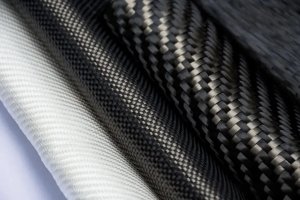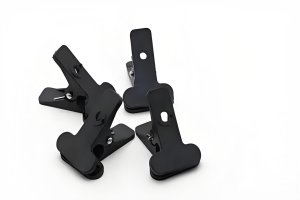Why Choosing the Right Titanium Plate Matters
When I first got involved in custom manufacturing, I underestimated just how significant the choice of material—especially titanium plate—could be. Selecting the right titanium grade isn’t just about checking boxes on a specification sheet. It affects machining time, tool life, product performance, and even how profitable a project becomes.
Early on, during a CNC project for aerospace components, I vividly recall facing unexpected tool wear issues, constant downtime, and escalating costs. The reason? We initially chose the wrong type of titanium plate without adequately understanding its machining characteristics. After some costly trial and error, I realized that every grade has unique properties influencing machinability, corrosion resistance, and mechanical performance.
Today, with years of hands-on experience in machining titanium, I’m sharing what I wish someone had clearly explained to me at the beginning. This guide is designed for engineers, CNC machinists, and procurement specialists who need straightforward, practical insights on choosing and sourcing titanium plates effectively.
Throughout the article, you’ll find specific recommendations, first-hand experiences, clear data comparisons, and real-world supplier tips. My goal? Helping you avoid the mistakes I’ve made and confidently choose the right titanium plate for your CNC machining projects. Let’s get started.
Overview of Titanium Plate Grades for Machining
Choosing the correct titanium plate starts by clearly understanding the various grades available. Each titanium grade has distinct properties influencing machinability, strength, corrosion resistance, and ideal applications. To prevent costly mistakes, here’s what I’ve learned through direct experiences and extensive research into the different titanium plate grades.
Titanium Grades: Basic Overview and Applications
Let’s first clarify what the common titanium grades actually mean. While there are numerous titanium alloys and grades, the following are most widely used in CNC machining:
- Grade 1 (Commercially Pure Titanium – CP1)
- Grade 2 (Commercially Pure Titanium – CP2)
- Grade 3 (Commercially Pure Titanium – CP3)
- Grade 4 (Commercially Pure Titanium – CP4)
- Grade 5 (Ti-6Al-4V)
- Ti-3Al-2.5V
Key Differences Between Popular Grades (Data Table)
To help you make a quicker, smarter decision, here’s a straightforward comparison table:
| Grade | Strength (MPa) | Ductility (%) | Corrosion Resistance | Machinability | Typical Application |
|---|---|---|---|---|---|
| GR1 | 240-350 | ~24 | Excellent | Good | Chemical processing, marine |
| GR2 | 340-420 | ~20 | Excellent | Moderate | Medical implants, chemical tanks |
| GR3 | 450-550 | ~18 | Good | Moderate | Aerospace tubing, automotive |
| GR4 | 550-700 | ~15 | Good | Moderate | Medical implants, aerospace |
| GR5 (Ti-6Al-4V) | 900-1200 | ~10 | Good | Challenging | Aerospace components, racing |
| Ti-3Al-2.5V | 600-700 | ~15 | Good | Moderate | Aerospace tubing, racing |
This table encapsulates what I’ve observed firsthand: each grade has trade-offs. Pure titanium grades (1-4) offer excellent corrosion resistance, lower strength, and better machinability than alloy grades like GR5.
Understanding Mechanical Properties in Real-world Contexts
From my own machining experience, GR5 (Ti-6Al-4V) is by far the strongest and most widely used alloy, especially in aerospace. Yet, the trade-off is that it’s notably harder to machine. If your project requires extreme strength-to-weight ratios, GR5 titanium plate is typically ideal. But if corrosion resistance is a priority, grades 1 and 2 are more practical, especially in chemical or marine settings.
I’ve personally used GR2 titanium plates for medical implants, where excellent biocompatibility is essential. GR4, with slightly less machinability than GR2, provides a useful balance between strength and corrosion resistance, particularly valuable for surgical instruments.
Understanding your project’s exact needs helps pinpoint precisely which titanium plate grade fits your CNC machining application best.
Machinability Comparison of Different Titanium Plates
Machinability is the next big hurdle in selecting the right titanium plate. As anyone who has spent significant time in a CNC shop can attest, machining titanium isn’t easy. Over the years, I’ve found huge variability in machining difficulty depending on the titanium grade. Here’s my straightforward analysis based on firsthand experiences, combined with industry-standard practices.
Machinability Ratings of Popular Titanium Grades (Table)
Let’s look at a practical rating of machinability I’ve compiled from multiple projects. Ratings are from 1 (most difficult) to 5 (easiest):
| Grade | Machinability | Tool Wear | Cutting Speed | Feed Rate |
|---|---|---|---|---|
| GR1 | 5 (Easy) | Low | Medium-High | Medium |
| GR2 | 4 (Moderate) | Moderate | Medium | Medium |
| GR3 | 3 (Moderate) | Moderate-High | Medium | Medium-Low |
| GR4 | 3 (Moderate) | High | Medium-Low | Low |
| GR5 | 1 (Difficult) | Very High | Low | Very Low |
| Ti-3Al-2.5V | 3 (Moderate) | Moderate-High | Medium-Low | Medium |
From personal CNC machining projects, the table above reflects reality accurately. Grades 1 and 2 are noticeably easier to handle on standard CNC machines compared to alloyed grades like GR5.
Real-world Machining Insights
I recall one project clearly—an aerospace component involving GR5 titanium plate. Tool wear was significantly more rapid than initially anticipated, prompting frequent stops and increasing production costs. By contrast, a similar project using GR2 plates showed dramatically longer tool life and reduced downtime. Understanding these differences beforehand is crucial.
One essential aspect often overlooked is thermal conductivity. Titanium has low thermal conductivity overall, meaning heat accumulates at the cutting zone rapidly. GR5 titanium plates generate significantly more heat and require aggressive coolant strategies. Conversely, CP grades like GR1 and GR2, while still challenging, dissipate heat slightly better.
Practical Tips on Tool Selection and CNC Parameters
Here are some personal tips on choosing CNC tools based on the titanium plate grade you’re machining:
- Grades 1 & 2: Standard carbide tools usually suffice. Maintain moderate speeds, utilize high-quality coolant.
- Grades 3 & 4: Upgraded carbide tools (coated), controlled feed rates, and high-quality lubrication are essential.
- Grade 5 (Ti-6Al-4V): Advanced coated carbide, PCD (polycrystalline diamond), or CBN (cubic boron nitride) tools are mandatory. Employ aggressive coolant flushing, significantly reduced spindle speeds, and minimal feed rates.
My real-world experiences strongly validate these guidelines. Incorrect tool choices or speeds inevitably lead to premature tool failure, downtime, and wasted titanium plate material—costly errors easily avoidable through proper preparation.
Post-machining Considerations and Surface Quality
Another factor that emerged from personal observation is post-machining surface quality. GR5 plates often require secondary polishing or grinding to meet aerospace or medical finish standards. CP grades generally offer smoother surfaces directly from the CNC machine, minimizing secondary processing.
If your application demands exceptionally tight tolerances and finishes, additional post-processing steps are virtually inevitable with GR5 titanium plates. In contrast, selecting GR2 or GR1 significantly reduces these needs, saving production time and cost.
Application-Based Selection: Which Grade for Which Use Case?
Choosing the right titanium plate means clearly matching specific titanium grades to real-world applications. Over the years, I’ve handled diverse CNC projects across multiple industries, from medical implants to aerospace brackets. I quickly learned that aligning the titanium plate grade to the intended application makes an enormous difference. Here’s a detailed guide based on those hands-on experiences.
Aerospace: Prioritizing Strength-to-Weight Ratio (Ti-6Al-4V)
In aerospace projects, performance demands are extraordinarily high. Aircraft and spacecraft components typically must offer maximum strength at the lowest possible weight. The titanium plate I’ve found most effective for these scenarios is Grade 5 (Ti-6Al-4V).
For instance, I once machined aerospace brackets from a 10 mm thick GR5 titanium plate. The high strength-to-weight ratio allowed us to significantly reduce component weight without sacrificing performance. The trade-off? Greater tool wear and higher machining complexity. However, the final performance justified the investment.
Medical Devices: Biocompatibility and Corrosion Resistance (GR2 & GR4)
When machining titanium plates for medical applications, biocompatibility and corrosion resistance become priorities. I’ve personally witnessed that GR2 and GR4 excel here due to their purity, excellent corrosion resistance, and ease of sterilization.
During a medical implants project involving GR2 titanium plates, tool life was noticeably better, and surface finish met medical-grade standards directly after CNC milling. By contrast, GR5 implants required significantly more post-processing to achieve similar standards.
Here’s a simple overview of recommended grades for common medical applications:
| Application Type | Recommended Grade | Key Reason |
|---|---|---|
| Orthopedic implants | GR2, GR4 | Excellent biocompatibility |
| Surgical instruments | GR4, Ti-6Al-4V | Strength and durability |
| Dental implants | GR2 | Best corrosion resistance |
| Prosthetics | GR2, Ti-6Al-4V | Comfort and strength |
This table reflects my practical experience. Medical buyers and engineers should clearly identify the balance needed between machinability and final performance.
Automotive and Racing: Balancing Performance and Cost (Ti-3Al-2.5V, GR5)
For high-performance automotive components and racing applications, titanium plates are often chosen for strength and weight savings. However, cost-effectiveness is also crucial.
In several racing-part projects, I’ve observed Ti-3Al-2.5V and GR5 being the preferred titanium plates. Ti-3Al-2.5V provides a good balance between machinability, strength, and affordability. GR5, although more expensive, offers superior performance characteristics.
Typical automotive/racing grade recommendations based on my experience:
| Component | Ideal Grade | Reason for Selection |
|---|---|---|
| Exhaust system components | Ti-3Al-2.5V | Corrosion and heat resistance |
| Suspension brackets | GR5 | Exceptional strength |
| Engine mounts | GR5 | High stress tolerance |
| Transmission casings | Ti-3Al-2.5V, GR5 | Balance of strength/cost |
| Brake calipers | GR5 | Strength and durability |
Industrial and Marine: Corrosion Resistance Dominates (GR1 & GR2)
Industrial environments—especially marine and chemical processing—require titanium plates with superior corrosion resistance. Commercially Pure (CP) titanium plates GR1 and GR2 are the most suitable choices, according to my practical experiences.
For instance, machining GR2 titanium plates for marine valves was relatively straightforward, requiring standard carbide tools and moderate cutting parameters. These plates resisted corrosion exceptionally well, greatly extending the service life of the final product.
Industry-specific recommendations:
| Industrial Application | Recommended Grade | Rationale |
|---|---|---|
| Marine valves and pumps | GR2 | High corrosion resistance |
| Chemical processing tanks | GR1, GR2 | Excellent chemical resistance |
| Desalination equipment | GR2 | Best performance in saltwater |
| Offshore platform components | GR2, GR5 | Durability and corrosion protection |
| Industrial heat exchangers | GR1, GR2 | Superior corrosion performance |
Choosing Based on Cost and Machinability
An often-overlooked but critical point from my practical experience: budget and ease of machining can heavily influence titanium plate selection. GR2 plates, for example, balance cost-efficiency and machinability exceptionally well for general applications. On the other hand, specialized aerospace or racing projects justify the higher cost of GR5 titanium plates.
CNC Machining Considerations Based on Plate Choice
Once you’ve chosen your titanium plate grade, the next crucial step involves adapting your CNC machining practices to that specific grade. I have learned through multiple projects that machining titanium effectively demands clear strategies tailored to the plate selected.
Holding and Fixturing Strategies
Titanium plates require solid and stable fixturing due to their relatively high strength and tendency to vibrate under machining forces. During a project with GR5 titanium plates, inadequate fixture rigidity caused severe chatter and poor surface quality.
Practical tips from my experience:
- Use rigid, vibration-dampening clamps: Minimize vibrations that cause chatter and poor finishes.
- Secure multiple points for thin plates: Thin titanium plates deform easily without proper support.
- Regularly check fixtures: Loose fixtures magnify tool wear and reduce accuracy significantly.
CNC Tooling and Parameter Tips by Grade
Optimizing tooling and CNC parameters based on the titanium plate chosen can drastically reduce machining problems. I’ve summarized effective parameters from my direct experiences in the table below:
| Grade | Recommended Tooling | Cutting Speed (SFM) | Feed Rate (IPR) | Coolant/Lubrication |
|---|---|---|---|---|
| GR1 | Standard Carbide | 80-100 | 0.004-0.006 | Standard coolant |
| GR2 | Carbide with TiAlN coating | 60-90 | 0.003-0.005 | High-quality coolant |
| GR5 | High-performance coated Carbide or CBN | 30-60 | 0.002-0.004 | Aggressive coolant flushing |
These values reflect real-world trials and adjustments made on the shop floor, directly translating to improved efficiency and tool life.
Surface Finish Considerations
Your choice of titanium plate grade significantly affects final surface finish and required post-processing. With GR5, achieving high-quality finishes directly off the CNC machine is challenging and typically requires secondary polishing or grinding. By contrast, GR2 and GR1 plates allow for smoother finishes immediately after machining.
For precise aerospace or medical applications, I’ve found that a two-stage approach—initial CNC machining followed by polishing—consistently delivers the best results, particularly for high-performance alloys like GR5.
Personal Insight: Managing Heat Generation
A critical but frequently overlooked issue I’ve personally tackled is heat generation during CNC machining. Titanium’s poor thermal conductivity, especially in GR5 plates, causes rapid heat buildup, quickly deteriorating tooling if not properly managed.
Effective solutions based on my hands-on machining experience include:
- Aggressive coolant strategies: Flood coolant generously, using high-pressure pumps.
- Lower RPM, moderate feeds: Adjust cutting parameters to limit heat buildup.
- Continuous chip evacuation: Regularly clear chips to prevent recutting, a significant source of excess heat.
Summary of CNC Machining Best Practices by Grade (Table)
| Practice | GR1 & GR2 | GR5 (Ti-6Al-4V) |
|---|---|---|
| Cutting speed | Moderate | Low |
| Tool material | Carbide, standard coatings | Advanced carbide, CBN, PCD |
| Fixture rigidity | Moderate to high | High |
| Coolant approach | Standard high-quality | Aggressive high-pressure |
| Surface finish | Good off-machine finish | Requires secondary processing |
These guidelines are practical reflections of lessons learned in CNC machining across different grades of titanium plates.
Titanium Plate Supplier Selection Guide
Selecting the right titanium plate supplier is just as crucial as choosing the correct material grade. Over the years, I’ve seen firsthand how supplier choices directly affect product quality, project timelines, and budget management. From unexpected delivery delays to inconsistent plate quality, supplier-related issues can severely impact your CNC machining operations.
In this chapter, I’ll guide you through my personal strategies for evaluating and choosing reliable titanium plate suppliers.
Domestic vs. International Suppliers: Personal Experiences
Early in my machining career, I relied heavily on international suppliers, attracted primarily by lower costs. However, hidden factors often offset initial savings, such as shipping costs, import tariffs, customs delays, and inconsistent quality control. For example, one aerospace project was delayed two weeks because an overseas shipment got stuck in customs. The initial savings vanished quickly when we considered the downtime and expedited follow-up orders.
In contrast, domestic suppliers have consistently delivered faster, clearer communication and reliable quality—though sometimes at a higher upfront cost. I found that the premium is usually justified when considering smoother operations and fewer surprises.
Here’s my practical comparison based on real experiences:
| Factor | Domestic Suppliers | International Suppliers |
|---|---|---|
| Lead Time | Shorter (1-3 weeks) | Longer (4-8 weeks) |
| Quality Consistency | High | Variable |
| Communication | Immediate | Delayed, time-zone issues |
| Shipping/Customs Issues | Minimal | Frequent, unexpected |
| Initial Cost | Higher | Lower |
| Long-term Cost Efficiency | Usually better | Often worse |
Certifications You Should Demand
Quality assurance certifications are crucial when selecting a titanium plate supplier. These certifications verify material standards, production processes, and traceability. Based on my extensive dealings with suppliers, I strongly recommend verifying these common certifications:
- ASTM B265: Standard specification for titanium plates.
- ISO 9001: Quality management system certification.
- ISO 13485: Essential for medical device applications.
- AS9100: Critical for aerospace suppliers.
- Mill Test Reports (MTR): Essential documentation for each batch of material.
Always ensure suppliers provide clear documentation upfront. Early in my career, skipping verification resulted in receiving plates that didn’t meet aerospace requirements, causing major project disruptions.
Evaluating Supplier Reliability: Practical Tips
Evaluating reliability can be tricky, but I’ve developed a straightforward process based on experience:
- Check References and Reviews: Directly contact previous buyers or check online reviews. Suppliers hesitant to provide references often have something to hide.
- Ask for Samples: Small sample orders allow you to evaluate product quality and consistency before committing to larger purchases.
- Assess Communication Speed and Clarity: Prompt, transparent communication typically signals supplier reliability.
Recommended Supplier Shortlist Example (based on personal experience)
Below is a sample shortlist from suppliers I’ve personally worked with or thoroughly vetted:
| Supplier Name | Location | Certifications | Recommended For |
|---|---|---|---|
| Titanium Industries Inc. | USA | ASTM, ISO 9001, AS9100 | Aerospace, Industrial |
| VSMPO-Tirus US | USA/Russia | ASTM, ISO 9001, AS9100 | Aerospace, High-performance |
| Supra Alloys | USA | ASTM, ISO 9001, ISO 13485 | Medical, General Industrial |
| Continental Steel | USA | ASTM, ISO 9001 | Marine, Chemical |
| Perryman Company | USA | ASTM, ISO 9001, ISO 13485 | Medical, Aerospace |
| Baoji Titanium Industry | China | ASTM, ISO 9001 | Cost-sensitive applications |
This list is not exhaustive, but it provides a solid starting point based on my direct experience and feedback from industry peers.
Summary: How to Decide What Titanium Plate You Need
After carefully exploring various titanium plate grades, machining considerations, and supplier choices, making your final selection can still feel overwhelming. So, based on my real-world experiences, I’ve created a clear and practical decision-making process to simplify this final step.
Step-by-Step Decision Flowchart for Selecting Titanium Plate Grades:
Use this straightforward flowchart I’ve personally relied upon to simplify titanium plate selection:
Start
|
+-- Application: Aerospace / Racing? --> Strength critical? --(Yes)--> GR5 (Ti-6Al-4V)
| |
| (No)--> Ti-3Al-2.5V
|
+-- Application: Medical? --> Biocompatibility critical? --(Yes)--> GR2 / GR4
| |
| (No)--> Strength important? --(Yes)--> GR4 / GR5
| |
| (No)--> GR2
|
+-- Application: Marine / Industrial? --> Corrosion resistance critical? --(Yes)--> GR1 / GR2
|
(No)--> Strength & machinability balanced? --> GR3 / GR4
Practical Checklist Before Ordering Titanium Plate:
Use this practical checklist I developed from past mistakes to ensure nothing gets overlooked:
- Clearly define your application requirements (strength, corrosion, biocompatibility).
- Choose a titanium plate grade aligning closely with those requirements.
- Verify supplier certifications (ASTM, ISO, AS9100, ISO 13485).
- Confirm material thickness and dimensions match CNC machining specifications.
- Request and review Mill Test Reports (MTRs) before finalizing the purchase.
- Request samples when dealing with new suppliers.
- Ensure adequate CNC tooling and machining parameters are ready for the selected grade.
Using these tools significantly simplifies and streamlines the decision-making process, reducing errors, enhancing productivity, and protecting your budget.
Conclusion:
Throughout this guide, I’ve aimed to share practical, real-world experiences that help you avoid costly mistakes when selecting and machining titanium plates. Choosing the correct titanium plate grade, adapting CNC practices, and selecting reliable suppliers are pivotal steps toward successful outcomes.
If you follow these insights and strategies, based on years of firsthand experience, you’ll be well-equipped to confidently make the right choice every time. Now, you’re ready to effectively choose and utilize the perfect titanium plate for your machining projects.
FAQ
1. What’s the difference between GR2 and GR5 titanium plates?
GR2 is commercially pure titanium and easier to machine. It has great corrosion resistance and is used in medical, marine, and chemical industries. GR5 (Ti-6Al-4V) is an alloy with higher strength and is widely used in aerospace and high-performance applications but is much harder to machine.
2. Which titanium grade is easiest to machine using CNC?
GR1 is the softest and easiest to machine, followed closely by GR2. They both offer lower tool wear and smoother finishes compared to alloyed grades.
3. Is Ti-6Al-4V suitable for both milling and turning?
Yes, but it’s challenging. It requires advanced tooling, strict temperature control, and careful chip management to maintain tool life and surface quality.
4. How do I choose between GR1 and GR2 for corrosion-resistant parts?
Use GR1 when maximum corrosion resistance is needed and machining complexity is low. GR2 is slightly stronger and better for parts needing moderate strength with excellent corrosion resistance.
5. Why is GR5 more expensive than GR2, and is it worth it?
GR5 is alloyed for much higher strength and heat resistance. It’s worth it if the application demands superior mechanical performance—like in aerospace, racing, or high-pressure systems.
6. Can I use the same tooling for GR2 and GR5?
Technically yes, but it’s not recommended. GR5 is significantly harder and wears tools faster. Use coated or specialized tooling for GR5, while GR2 can often be machined with standard carbide tools.
7. What are the common thicknesses available for titanium plates used in CNC?
Common stock ranges from 0.5 mm to 50 mm thick. For most CNC milling projects, I typically work with plates between 2 mm and 25 mm, depending on the application.
8. Which titanium grade is best for medical implants?
GR2 and GR4 are widely used due to their high biocompatibility, excellent corrosion resistance, and ease of sterilization.
9. What grade offers the best strength-to-weight ratio?
GR5 (Ti-6Al-4V) offers the best overall strength-to-weight ratio, making it a staple in aerospace and performance applications.
10. Does the choice of titanium plate affect surface finish quality?
Absolutely. Softer grades like GR2 produce cleaner finishes off the machine, while harder grades like GR5 often require polishing or grinding to achieve high-end finishes.
11. How does thermal conductivity differ across titanium grades during machining?
All titanium grades have low thermal conductivity compared to other metals, but GR5 accumulates heat faster due to its alloying. This increases the risk of tool wear unless heat is controlled aggressively.
12. Are some titanium grades not suitable for waterjet cutting?
Most titanium plates can be waterjet cut, but extremely thin GR1 or GR2 sheets may deform. Alloy grades like GR5 handle waterjet cutting well when fixtured properly.
13. Can titanium plates be bent or formed after machining?
Yes, but forming is easier with CP grades (GR1-GR4). GR5 is more brittle and requires pre-heating or special forming processes.
14. Where can I find certified titanium plate suppliers for aerospace/medical use?
Suppliers like Titanium Industries, VSMPO-Tirus, and Perryman Company are reliable. Always check for ASTM, ISO 13485, or AS9100 certifications depending on your application.
15. What’s the typical lead time when ordering titanium plate stock?
Domestic suppliers usually deliver in 1–3 weeks. International orders take 4–8 weeks, not including customs or shipping delays. Always ask for real-time stock availability.
16. Are recycled titanium plates suitable for precision machining?
Not always. Recycled titanium may not meet mechanical property specs or have traceability. For aerospace, medical, or high-load parts, always use certified virgin stock.
17. How do machining costs vary by titanium grade?
GR1 and GR2 are cheaper to machine. GR5 significantly increases cost due to lower cutting speeds, high tool wear, and longer cycle times.
18. Can a prototype and production part use different titanium grades?
Yes, but be cautious. Prototypes often use GR2 for cost and ease, while final parts switch to GR5. Just make sure your machining setup and tolerances are compatible across grades.
19. Is domestic or overseas titanium plate sourcing more cost-effective?
Short-term cost may be lower overseas, but domestic sourcing wins in quality control, lead time, and customer support. For critical projects, I always recommend domestic.
20. Can I machine titanium plates with a standard CNC machine?
Yes, but only up to a point. Lighter CNC machines struggle with GR5 due to rigidity limits and heat buildup. For anything thicker than 10 mm in GR5, a high-rigidity, high-torque machine is essential.
Further Reading and References
If you’d like to explore more in-depth or foundational knowledge related to titanium plate materials, machining properties, and industry standards, here are several trusted, non-commercial sources that I personally refer to and recommend:
- Titanium Grades Overview – Wikipedia
A helpful overview of common titanium grades, including mechanical properties and applications.
🔗 https://en.wikipedia.org/wiki/Titanium_alloy
- Machining Titanium and Its Alloys – ASM International
A detailed guide by ASM International, discussing machinability issues, tool recommendations, and cutting parameters.
🔗 https://www.asminternational.org/documents/10192/1849770/ACF1801B.pdf
(Note: Direct PDF from ASM’s archive) - Welding and Fabrication of Titanium – The Welding Institute (TWI)
A well-written technical summary on welding, forming, and machining titanium in various industrial applications.
🔗 https://www.twi-global.com/technical-knowledge/job-knowledge/titanium-and-titanium-alloys-039 - Corrosion Resistance of Titanium – Wikipedia
An accessible explanation of why titanium resists corrosion, including its natural oxide layer and behavior in seawater.
🔗 https://en.wikipedia.org/wiki/Corrosion_resistance_of_titanium
Other Articles You Might Enjoy
- Titanium Bolts: The Ultimate Guide to High-Strength, Lightweight Fasteners
Introduction: Why Titanium Bolts and CNC Machining Matter? Welcome, and thanks for reading my in-depth guide on titanium bolts. I’ve been working around metals and machining for a good part…
- Mastering Grade 5 Titanium Machining: Cutting Tools, Coolants & Strategies
Chapter 1: Introduction to Grade 5 Titanium (Ti-6Al-4V) Grade 5 titanium, also known as Ti-6Al-4V, is a material that consistently amazes me.When I first encountered grade 5 titanium, I was…
- Titanium vs Steel In Machining, Manufacturing, and Engineering: A Complete Guide to Strength, Weight, and Durability
I chose this title because I wanted to provide a comprehensive overview of titanium vs steel and how each material performs in machining, manufacturing, and engineering contexts. I’ve worked with both metals…
- Titanium Cutting Board: Precision Machining, Benefits, and Industry Applications
Introduction I remember the first time I encountered a Titanium Cutting Board at a culinary expo. I was amazed by how different it looked from standard wooden or plastic boards.…
- Mastering Titanium Alloy Machining: Challenges, Techniques, and Industry Applications
Chapter 1: Introduction When I first began working with Titanium Alloy, I was struck by how unique they were. These materials combine high strength, low weight, and exceptional resistance to…
- Titanium Color and CNC Machining Techniques Explained
Introduction: The Appeal of Titanium Color in CNC Machining Titanium has always fascinated industries for its lightweight yet strong properties, but its natural titanium color adds an extra layer of…
- does titanium rust? what is titanium ?
Introduction to Titanium Titanium is a lustrous, silver-gray metal known for its high strength-to-weight ratio, corrosion resistance, and ability to withstand extreme temperatures. Widely used in aerospace designs, medical devices,…
- Comparing Tungsten vs Titanium for Custom Parts with CNC Technology
Introduction In high-performance industries such as aerospace, medical devices, automotive, and defense, selecting the right material is crucial to meeting specific application needs. Two materials that often stand out due…
- Is Titanium Lighter Than Aluminum in the World of CNC Machining
Introduction In the world of manufacturing, particularly in CNC machining, the choice of material plays a pivotal role in the performance, cost, and durability of parts. Among the most commonly…






